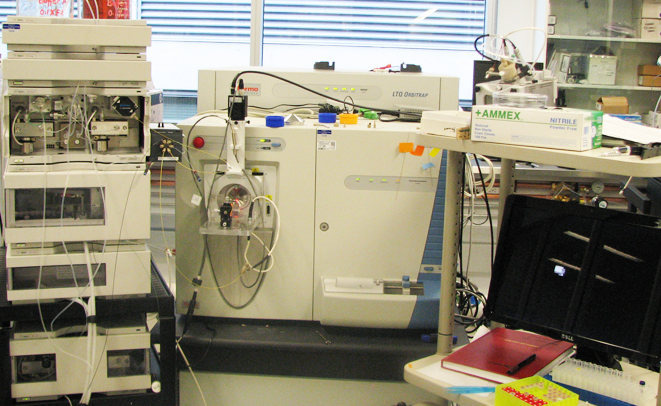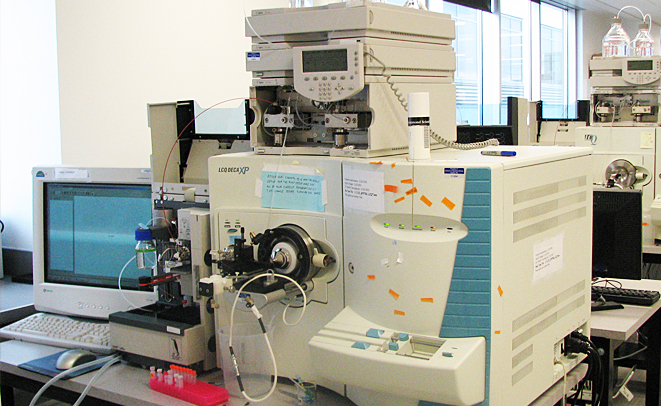This website uses cookies so that we can provide you with the best user experience possible. Cookie information is stored in your browser and performs functions such as recognising you when you return to our website and helping our team to understand which sections of the website you find most interesting and useful.
Orbitraps
at the Institute for Systems Biology
Orbitraps
LTQ-Orbitrap Classic
The Thermo-Fisher Orbitrap combines the Linear Ion Trap of an LTQ with the Orbitap mass analyzer which provides both high mass accuracy (1-2ppm) with internal standards and a maximum resolving power of 100,000 fwhm. Ions are held in the Ctrap portion the instrument before being injected into the Orbitap to resolve the full MS data. The LTQ portion is used for CID collision induced dissociation MSMS scans of peptides for identification purposes. Makarov A, Denisov E, Kholomeev A, Balschun W, Lange O, Strupat K, Horning S (2006). “Performance evaluation of a hybrid linear ion trap/orbitrap mass spectrometer”. Anal. Chem. 78 (7): 2113-20
LCQ Deca XP
The Thermo Fischer Orbitrap velos improves upon the earlier model to create a mass sprectromter with even better mass accuracy resolution at even faster scan rates. The newer version uses S-lens optics to better focus the ions through 2 separate traps, high pressure for better collision and low pressure for quicker ion detection. The trap itself can also perfrom PQD or Pulsed Q Collission Dissociation (PQD) which enables better detection of low m/z product ions The velos is also equipped with a High Collision Dissociation cell and an Electron Transfer Dissociation cell. These two different collision cells provide an alternate means of fragmentation from the standard front end ion trap. HCD is often utilized to experimentally detect and analyze low mass ions such as the reporter ions used in ITRAQ experiements or to discover other peptide modifications. ETD fragementation is completely different form of fragmentation which uses the flouranthene anion to react chemically to the peptide backbone to create fragments with intact modification and side chains. This fragmentation only works well with peptides with a charge state of 3 or higher.






